Calming Activities for Kids: Simple Techniques to Help Children Self-Regulate and Relax
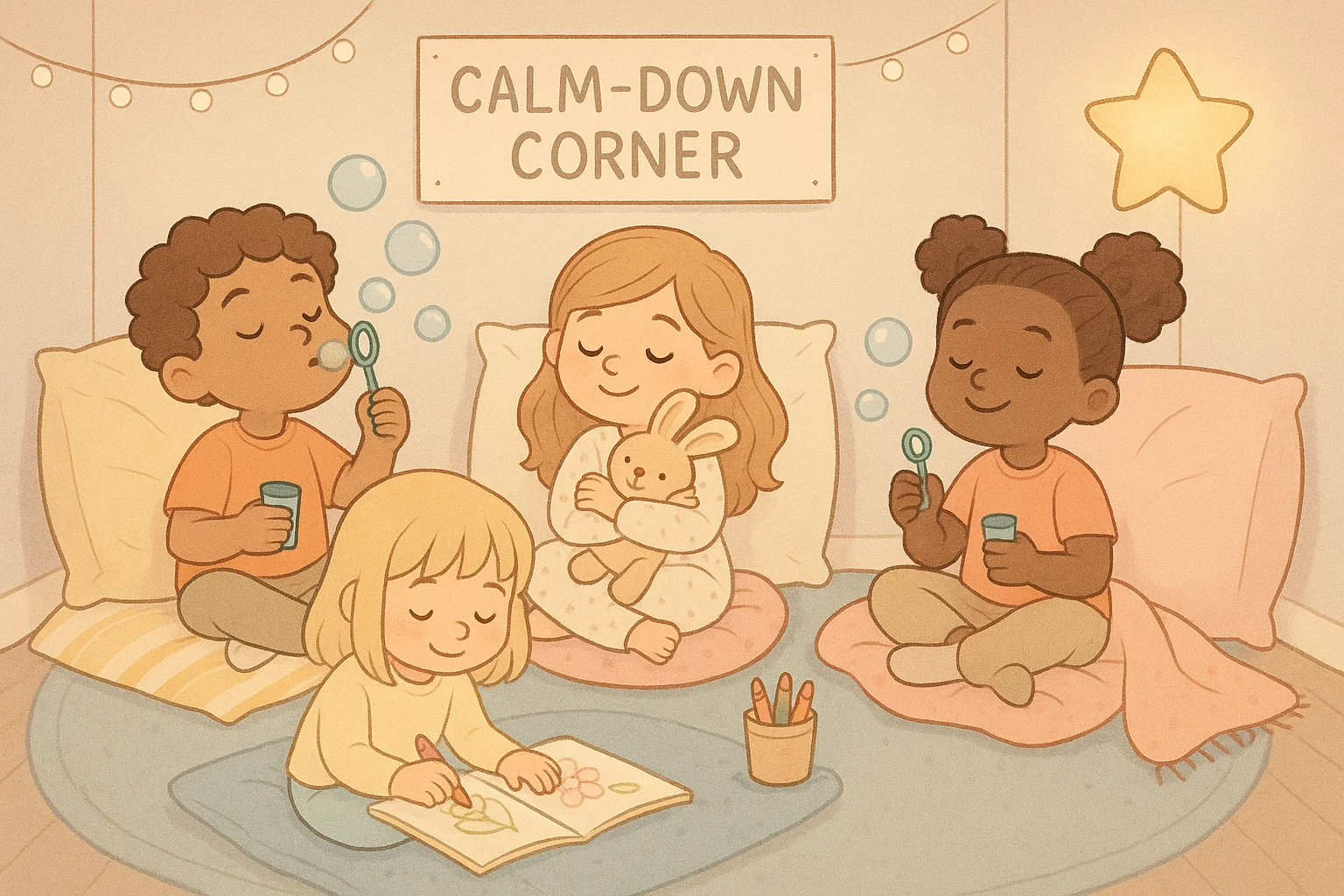
When children experience big emotions or feel overwhelmed, having effective calm activities for kids in your toolkit can make all the difference. Research shows that 20% of children experience anxiety disorders, making it crucial for parents and educators to understand practical techniques that help children stay calm and develop healthy coping mechanisms.
These evidence-based calming activities for kids focus on mindfulness, sensory engagement, and gentle movement to help young minds find peace during challenging moments.
Understanding Why Children Need Calming Strategies
Children’s brains are still developing, particularly the prefrontal cortex responsible for emotional regulation. According to child development specialists, children under 7 years old may struggle to self-regulate naturally, making it essential to teach them specific techniques for kids that promote emotional balance.
A systematic review of mindfulness-based interventions (MBIs) supporting emotional and cognitive self-regulation in early childhood (ages 3–6). PMC
Dr. Sarah Martinez, a pediatric counsellor with 15 years of experience, notes: “When children learn calming strategies early, they develop lifelong skills for managing stress and anxiety effectively.”
Common triggers that may overwhelm children include:
- Sensory overload in busy environments
- Transitions between activities
- Strong emotions like anger or frustration
- Social conflicts with peers
- Changes in routine or expectations
Mindful Breathing Exercises: The Foundation of Calm
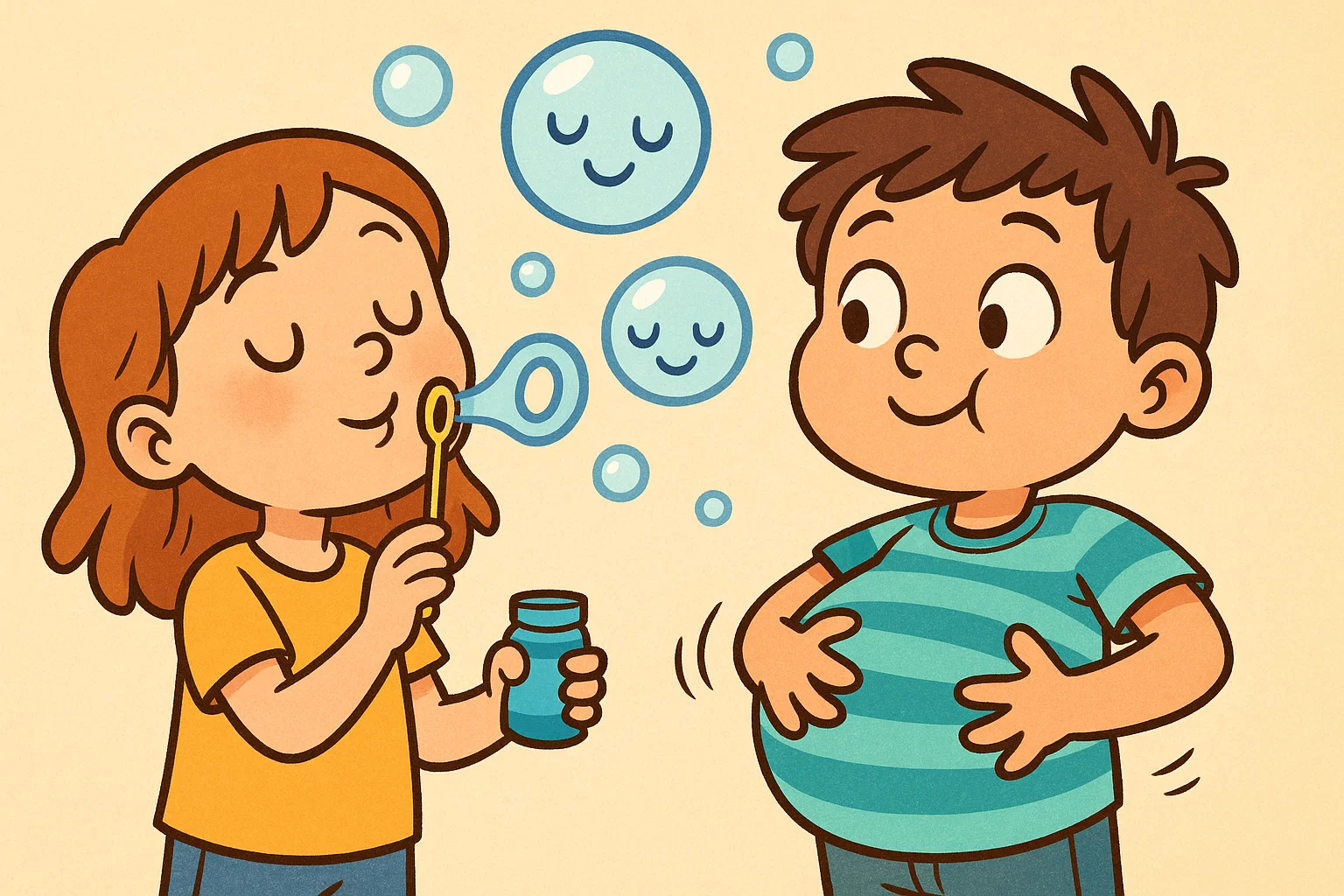
Deep breathing techniques serve as the cornerstone of helping kids develop self-regulation skills. These simple mindful exercises can be practiced anywhere and provide immediate relief when children feel hyper or overstimulated.
Bubble Breathing Technique
This engaging breathing exercise transforms the simple act of taking deep breaths into a playful activity:
- Have your child imagine holding a bubble wand
- Instruct them to take a slow, deep breath through their nose
- Ask them to breathe out slowly through their mouth, “blowing” imaginary bubbles
- Encourage them to watch the pretend bubbles float away, taking worries with them
Balloon Breathing for Preschoolers
Perfect for preschool-aged children, this technique helps visualize breath control:
- Place one hand on the chest, one on the belly
- Breathe in slowly, imagining the belly balloon inflating
- Hold for three seconds
- Exhale slowly, watching the balloon deflate
Here is a study finding that diaphragmatic breathing enhances sustained attention and reduces both negative affect and cortisol levels.
Sensory Calming Activities: Engaging the Senses for Peace
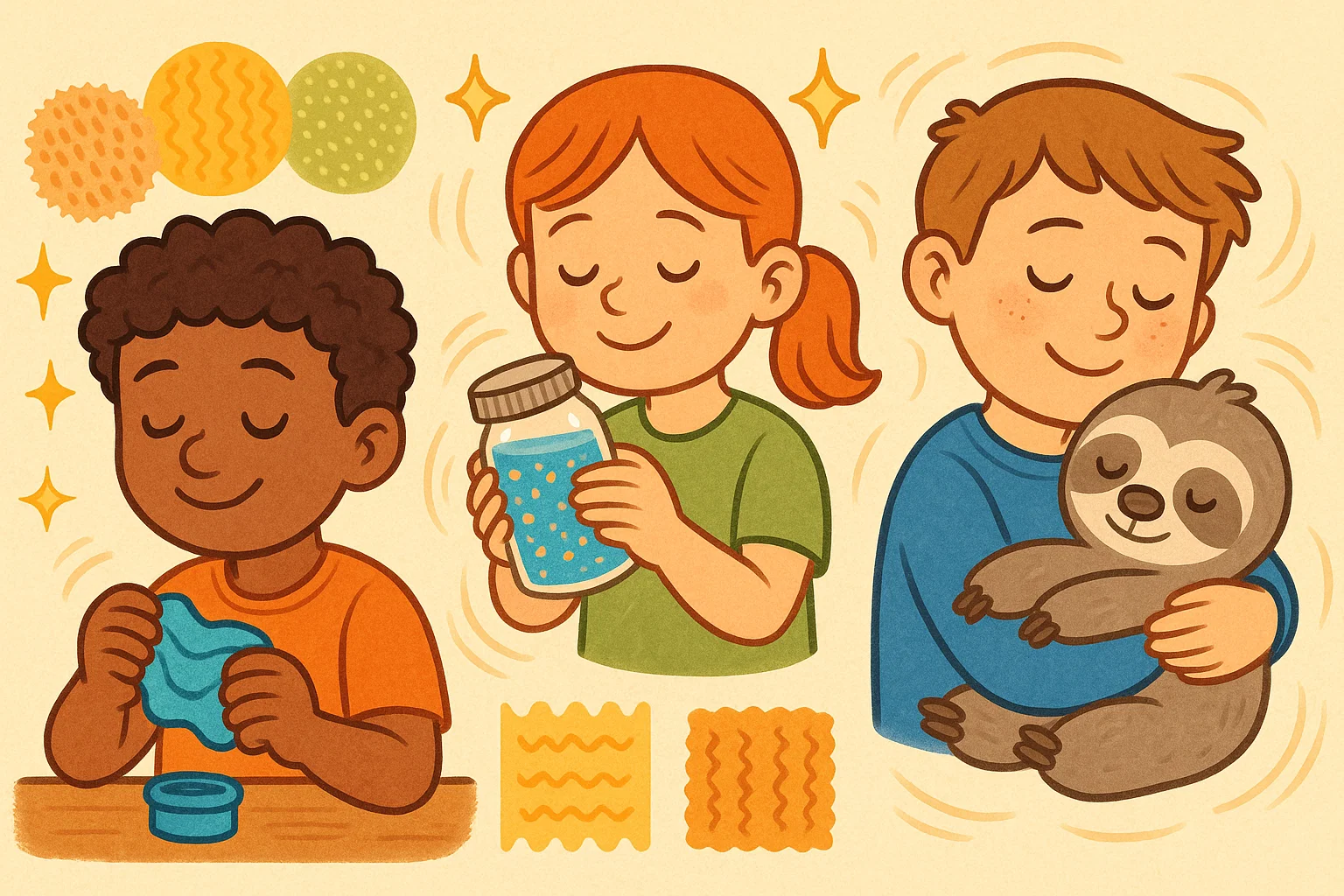
Sensory activities provide immediate grounding for children with ADHD, autism, or those who simply need tactile input to feel calm. These techniques work by redirecting attention from troubling thoughts to physical sensations.
Calming Sensory Toolkit
| Activity | Sensory Input | Age Group | Duration |
| Play-Doh squeezing | Tactile | 3-10 years | 5-15 minutes |
| Glitter calm-down jar | Visual | All ages | 2-5 minutes |
| Fidget toys | Tactile/Proprioceptive | 5+ years | As needed |
| Weighted stuffed animal | Deep pressure | 4+ years | 10-20 minutes |
DIY Sensory Solutions
Creating simple sensory tools at home can be both cost-effective and therapeutic:
Calming Glitter Jar Recipe:
- Clear jar with tight lid
- Warm water
- Clear corn syrup (2 tablespoons)
- Fine glitter
- Food coloring (optional)
Mix ingredients, seal tightly, and shake. Children can watch the glitter slowly settle, providing a mesmerizing focal point for deep breathing.
Movement-Based Calming Techniques
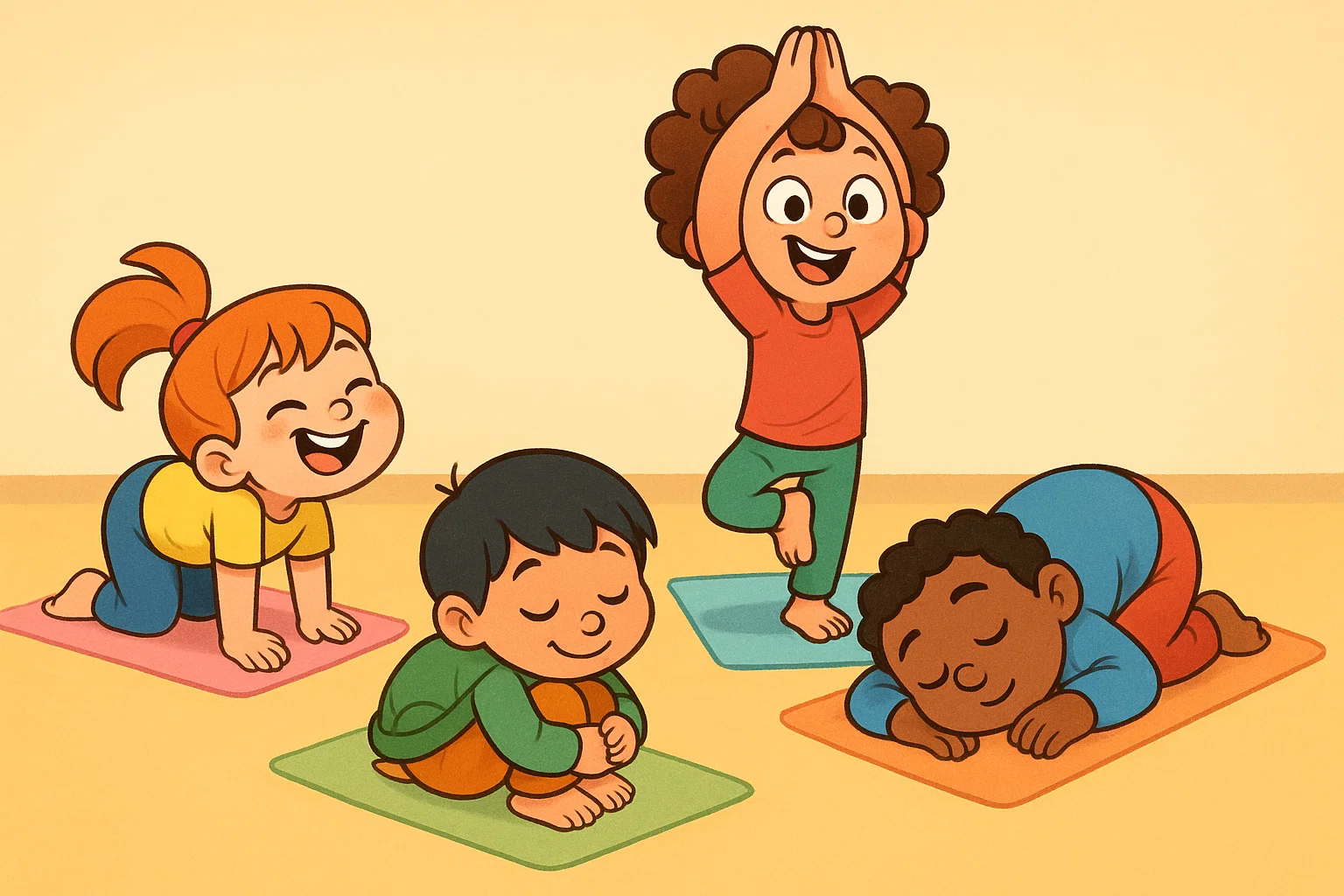
Physical movement helps children release tension and redirect energy positively. Yoga and gentle exercise prove particularly effective for children experiencing big feelings or restless energy.
Animal Movement Meditation
This fun approach combines mindfulness with gentle exercise:
- Stretching Cat: Arch back slowly, focusing on the sensation
- Calm Turtle: Pull arms and legs close to body, breathe slowly
- Swaying Tree: Stand tall, sway gently side to side
- Sleeping Bear: Lie down, relax all muscles progressively
Muscle Relaxation for Kids
Progressive muscle relaxation helps children identify tension and learn to release it:
- Start with toes – squeeze tight for 5 seconds, then relax
- Move up through legs, arms, face, and whole body
- Notice the difference between tense and relaxed muscles
- End with three deep breaths
“Teaching children to recognize physical tension gives them a powerful tool for managing anxiety,” explains Dr. Jennifer Chen, child psychologist.
Creative and Quiet Activities for Emotional Regulation
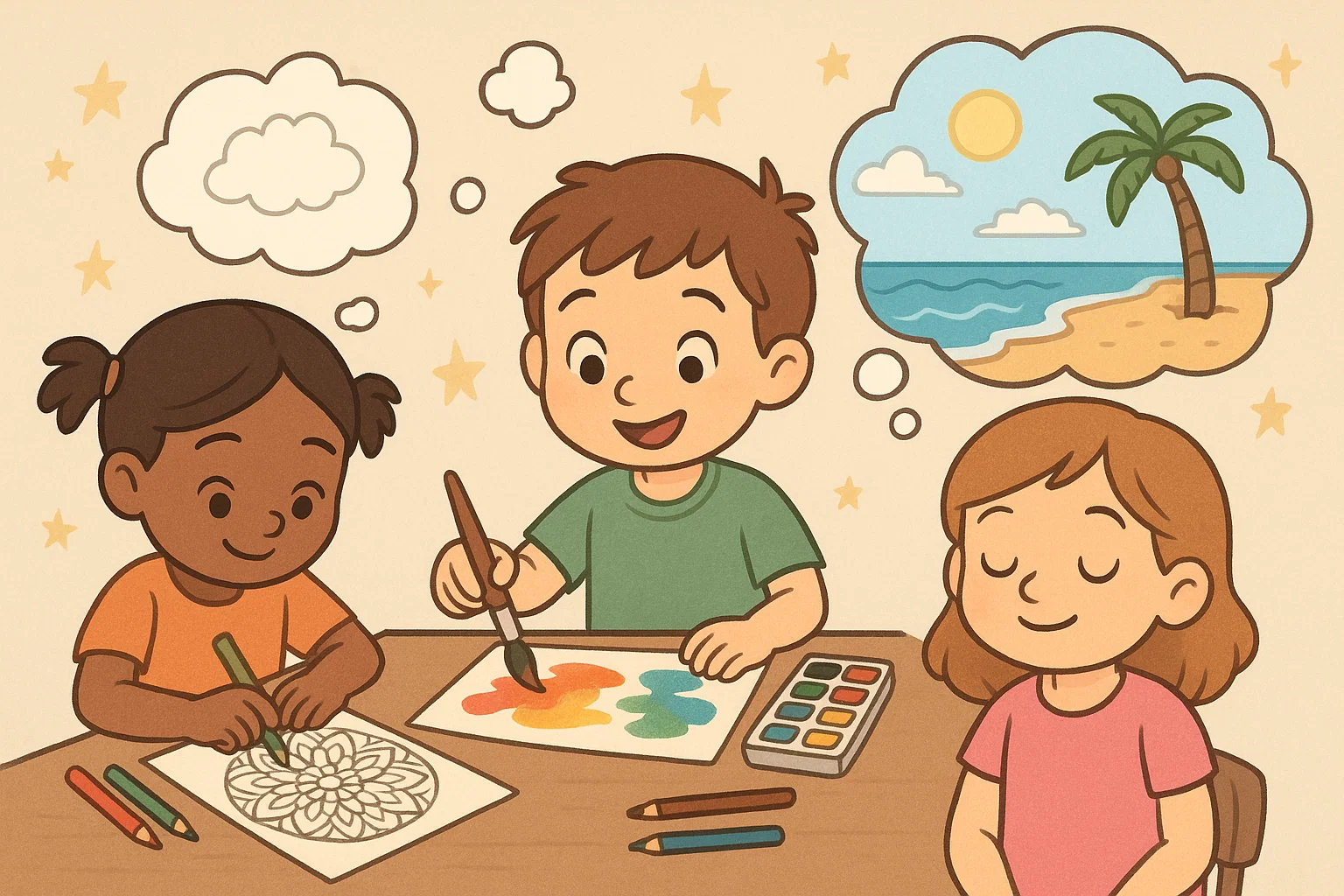
Art-based activities provide excellent outlets for processing strong emotions while promoting fine motor skills development and mindful focus.
Mindful Coloring and Art
Coloring books specifically designed for relaxation can help children:
- Focus attention on the present moment
- Express emotions through color choices
- Develop concentration skills
- Experience a sense of accomplishment
Storytelling and Visualization
Reading children’s books about emotions or creating calming mental images helps kids process feelings:
Guided Visualization Script: “Imagine your favorite calm place… What do you see? What sounds do you hear? How does the air feel on your skin?”
These techniques prove especially helpful for children feeling overwhelmed by providing mental escape and emotional processing time.
Creating Calming Environments at Home and School
The physical environment significantly impacts a child’s ability to self-regulate. Research suggests that organized, predictable spaces reduce anxiety by up to 30% in children.
Essential Elements of a Calm Space
- Soft lighting (avoid harsh fluorescents)
- Comfortable seating with cushions and blankets
- Noise control through soft background music or white noise
- Sensory tools easily accessible
- Visual calm with minimal clutter and soothing colors
Quiet Corner Setup
Creating a designated calm-down area helps children learn when and how to use self-regulation strategies:
- Choose a corner away from high-traffic areas
- Add soft cushions and a small blanket
- Include calming music playlist or nature sounds
- Provide stress balls, fidget toys, or textured fabric
- Display visual cues for breathing exercises
Age-Specific Calming Strategies
Different developmental stages require tailored approaches to helping kids manage emotions effectively.
Preschoolers (Ages 3-5)
- Simple breathing games with stuffed animals
- Sensory bottles and calm-down jars
- Repetitive activities like puzzles (large pieces)
- Songs with calming melodies and simple movements
School-Age Children (Ages 6-12)
- More complex breathing techniques
- Mindfulness apps designed for children
- Journaling or drawing about feelings
- Organized sports or dance for energy release
Teenagers (Ages 13+)
- Independent mindfulness practice
- Music therapy and playlist creation
- Physical exercise routines
- Peer support groups or counseling
When to Seek Professional Help?
While most children benefit from regular calming activities, some situations may require additional support from a counsellor or child development specialist.
Consider professional guidance if your child:
- Shows persistent anxiety lasting more than two weeks
- Experiences panic attacks or extreme fear responses
- Demonstrates aggressive behavior during emotional episodes
- Struggles with sleep disturbances related to anxiety
- Shows significant regression in developmental milestones
According to the American Academy of Pediatrics, early intervention for emotional regulation challenges leads to better outcomes in 85% of cases.
Building Long-Term Emotional Resilience
The goal of teaching calming activities extends beyond managing immediate crises. These skills help children develop emotional intelligence and resilience that serves them throughout life.
Daily Practice Recommendations
- Morning routine: 5 minutes of deep breathing or gentle stretching
- Transition times: Use brief mindful moments between activities
- Evening wind-down: Incorporate relaxing games or quiet activities
- Weekend projects: Create new sensory tools or practice longer meditation
Family Mindfulness Practice
When families practice calming techniques together, children see these skills as normal, valuable life tools rather than interventions for problems. Research indicates that children whose families practice mindfulness show 40% better emotional regulation skills.
Simple family activities include:
- Gratitude sharing during dinner
- Nature walks focusing on sensory observations
- Bedtime meditation or gentle yoga
- Creating calming music playlists together
Measuring Success and Adjusting Strategies
Every child responds differently to various calming techniques. Successful implementation requires observation, patience, and willingness to adapt approaches based on what works best for your individual child.
Signs that calming activities are working:
- Decreased frequency of emotional meltdowns
- Child independently chooses calming strategies
- Improved sleep patterns and appetite
- Better social interactions with peers
- Increased ability to verbalize feelings
Remember that developing self-regulation skills takes time and practice. Celebrate small victories and maintain consistency in offering these valuable tools for emotional well-being.
By incorporating these diverse calming activities into daily routines, parents and educators provide children with essential life skills for managing stress, processing emotions, and maintaining mental wellness throughout their development and beyond.
Frequently Asked Questions About Calming Activities for Kids
What are some simple calming activities that work best for preschoolers?
Simple calming techniques work exceptionally well for preschool-aged children because they’re easy to understand and implement. Some effective fun ideas include:
- Breathing buddies: Have your preschooler lie down with a stuffed animal on their belly and watch it rise and fall
- Color breathing: Ask them to breathe in their favorite color and breathe out a color they don’t like
- Magic squeeze: Teach them to squeeze their hands tight, then release to help calm tense muscles
- Bubble meditation: Blowing real or imaginary bubbles helps regulate breathing naturally
These activities typically take just 2-5 minutes, making them perfect for a preschooler’s attention span.
How can mindfulness help children manage strong feelings?
Mindfulness helps children by teaching them to observe their emotions without being overwhelmed by them. When kids learn mindfulness techniques, they develop:
- Awareness of their emotional states before they escalate
- Tools to pause and choose their response rather than react impulsively
- Understanding that strong feelings are temporary and will pass
- Confidence in their ability to self-regulate
What's the best way for kids to get started with calming activities?
The most effective way for kids to begin is through modeling and gentle introduction:
- Start small: Begin with 2-3 minute activities
- Practice together: Children learn best when adults participate
- Make it routine: Incorporate calming time into daily schedules
- Stay consistent: Use the same techniques regularly until they become natural
- Be patient: Allow 2-4 weeks for new habits to form
Remember, the goal isn’t perfection but creating a foundation kids can build upon.
What are some fun ideas that don't feel like "work" to children?
The key is disguising calming techniques as enjoyable activities:
- Calm-down games: “Red light, green light” with breathing (red = slow breath, green = normal)
- Sensory detective: Finding different textures around the house
- Emotion charades: Acting out feelings and their opposites
- Magic breathing: Pretending to blow up invisible balloons or cool down hot soup
- Animal yoga: Moving like different animals while focusing on breath
Children respond best when they perceive activities as play rather than therapy.
How can these activities help calm a child during a meltdown?
During intense emotional moments, the approach needs to be gentle and non-demanding:
Immediate strategies:
- Offer comfort items (weighted blanket, stuffed animal)
- Use minimal words and speak softly
- Model calm breathing without instructing
- Provide physical space while staying nearby
Once intensity decreases:
- Introduce simple breathing techniques
- Offer sensory tools like stress balls or fidgets
- Use familiar calming routines they’ve practiced before
Remember: Teaching happens before the storm, not during it.
Can kids learn these techniques on their own, or do they need constant adult guidance?
Kids can learn to use calming strategies independently, but the process requires scaffolding:
Initial phase (4-6 weeks): Adult guidance necessary Development phase (2-3 months): Gentle reminders and encouragement Independence phase (3+ months): Child initiates techniques with occasional support
Children as young as 4 can begin self-initiating simple techniques like deep breathing or using a calm-down jar.
